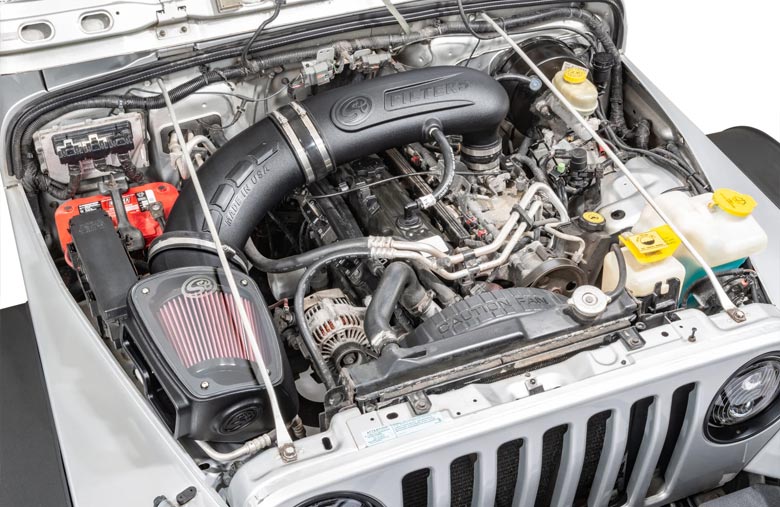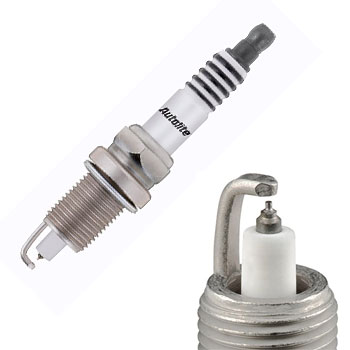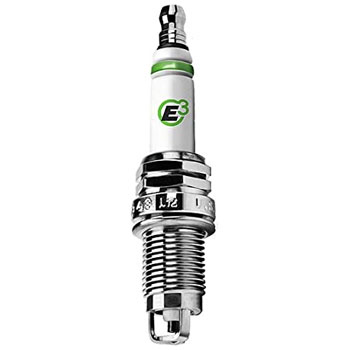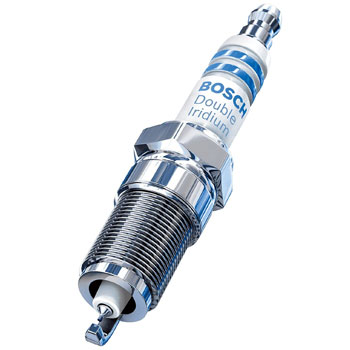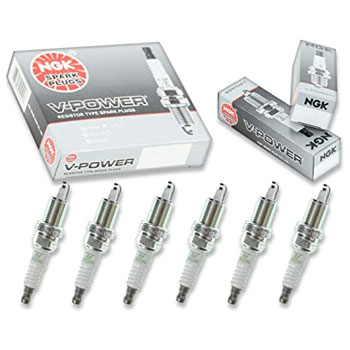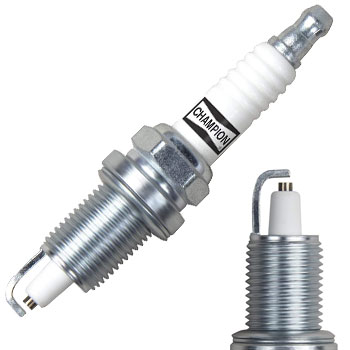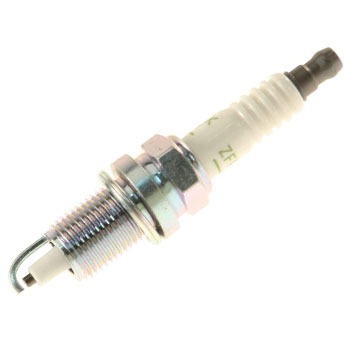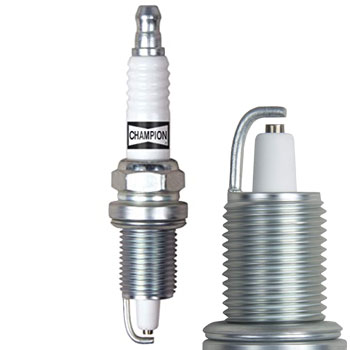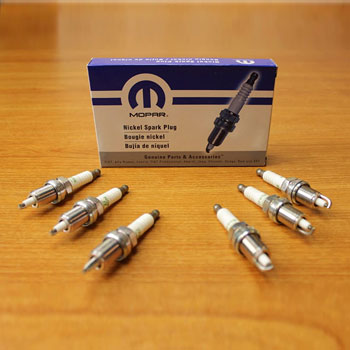Are you looking for the best spark plugs for 4.0 jeep? Are you perplexed by the different forms of spark plugs? Don’t worry about it; you’ll find all the details you need right here.
A sparkplug’s job is to ignite the explosive mixture by producing a spark at the right time. Spark plugs are sometimes used for other things; in Saab Direct Ignition, they are used to test ionization in the cylinders while not firing.
An ignition coil or magneto generates a high voltage, which connects to the connector. A voltage emerges between the central and side electrodes as current flows from the coil.
Size, thread or nut, sealing form (taper or crush washer), and spark gap are all factors to consider when choosing a spark plug.
The cam phase sensor, knock sensor, and misfire measurement functions are all replaced by this ionic current measurement. Spark plugs may use in other situations where a combustible fuel/air mixture needs to spark, such as furnaces. They are often referred to as flame igniters in this situation.
So, various spark plugs are appropriate for a 4.0 Jeep, but we’ll focus on the Eight Best Spark Plugs for 4.0 Jeep.
Table of Contents
Comparison Table of Best Spark Plugs For 4.0 Jeep
Design
Product
Vehicle Compatibility
Price
NGK V-Power Spark Plugs (6 pieces)
So far, we haven’t encountered any issues with NGK spark plugs. NGK V-Power spark plugs are a cost-effective option for almost any automotive use. They are one of the best spark plugs for Jeep 4.0 because they need less voltage to ignite the mixture and complete combustion.
Despite its simplistic nature, the NGK V-power spark plug is a high-quality product. These V-power plugs from NGK, a company with a long history of manufacturing plugs for Jeeps, are both affordable and dependable. They’ll help you eliminate rough idling, misfires, starting problems, and low fuel economy.
An old or worn-out socket could be the cause of a lack of throttle response. It’s important to keep the temperature range of the spark plug you’re buying for your Jeep in mind. Different heat range plugs are needed for different setups.
The solid insulator provided by the high-grade alumina silicate ceramic will reduce the risk of dielectric punch-through, which occurs when a spark exits through the side of the plug. You can rely on the plug because it has proven to be extremely reliable over the years.
Autolite Iridium Spark Plugs for 4.0 Jeep
The Autolite Iridium XP spark plug is designed and manufactured in the United States and features a refined wire design and platinum side wire program for increased reliability and ignitability.
The plug allows for platinum-to-platinum shooting, which reduces gap erosion. Furthermore, the plug eliminates misfires and provides long-term high-efficiency results. For the DIS engines, the spark plug is the chosen technology.
The plug’s electrode is made of high nickel alloy, with platinum tips and a copper core center electrode. It meets the OEM’s purpose and design requirements. There would be no discernible distinction between this and standard plugs.
The company provides a seven-year guarantee. So, if you’re not happy with the plug’s results, you can return them for a refund. So buy this plug with complete confidence and peace of mind.
Since they are designed for high-performance engines, these are the best spark plugs for 4.0 jeeps. You can still rely on them because they are both inexpensive and long-lasting.
Champion Copper Plus Spark Plug
Today, Champion Copper Plus Spark Plugs are widely used in a variety of power equipment applications.
They’re made of their Heat-Active alloy, which quickly reaches operating temperatures and maintains them under varying engine loads. The plugs will provide a consistent centered spark regardless of engine type or ignition, resulting in the best possible engine output.
Champion’s iridium spark plugs have excellent wear characteristics and a voltage-stabilizing impact. Manufacturers of engines all over the world are quickly embracing them as their preferred technology.
It was designed with ISO and SAE standards in mind, especially in terms of efficiency. As a result, you can be assured that it performs admirably. The semi-conductor resistor works to remove RFI and EMI to the greatest extent possible.
These spark plugs will easily reach the correct temperature and maintain it regardless of the engine load.
For individual cars, the Champion Copper Plus Replacement Spark Plug is available in a box of one. Before you buy something, make sure it’s compatible. It’s suitable for marine, small engines, and automotive vehicles. It’s also known as the best spark plug for a 4.0 Jeep. Please take a look at the following features:
NGK 3459 Spark Plugs for 4.0 Jeep
The NGK V-Power Spark Plug has a v-grooved nickel alloy center electrode that places the spark closer to the air/fuel mixture for faster ignition. It also needs more small ignition device voltage than standard nickel-type plugs. The NGK V-Power Spark Plug is a perfect choice for older vehicles with nickel-tipped spark plugs.
The NGK plug has a nickel alloy tip, which improves fuel efficiency and reduces emissions. The plug’s installation is seamless. For lightly modified pushrod or mod motors, these NGK spark plugs have a high-performance stock replacement option.
There are three seals on the spark plugs, so you won’t have to worry about leakage. The copper core is responsible for removing excess heat. You don’t have to be concerned about seizing or corrosion! This is due to the trivalent metal plating on the spark plugs.
The central electrode V-groove allows the flame to spread to more areas, increasing ignitability and providing a smooth and fun trip. It is, after all, the Best Spark Plug for 4.0 Jeep.
Champion Spark Plug – Plus 412
Champion Iridium spark plugs have a platinum ground and an iridium core electrode that is extremely finely wired. For high performance and long life, it is laser-locked to the middle electrode.
Champion’s iridium spark plugs have excellent wear characteristics and a voltage-stabilizing impact. Manufacturers of engines all over the world are quickly embracing them as their preferred technology.
Heat-active alloy aids in reaching operating temperatures quickly and maintaining them over a wide range of engine loads. The 0.7mm fine wire iridium tipped center electrode and a platinum v-trimmed ground electrode provide the most extended life and best corrosion resistance.
Electrodes made of a special heat-active alloy quickly reach maximum temperature and maintain the temperature under all engine loads. The Platinum ground’s main purpose is to ensure that the plug works well and lasts a long time.
The firing pin’s working temperature is reduced by the central nickel electrode with a copper core, a service life of up to 12,000 miles (20,000 kilometers). As a result, for at least two years, you’ll have unlimited mileage.
E3 Spark Plugs
The open nature of the DiamondFire forces air gap discharges, resulting in the preferred edge-to-edge spark direction. The design allows for a new fuel/air charge to be added to the spark region and exposes the flame front to the piston head more clearly than other plug designs.
The electrode is fixed to the shell with three legs to aid excellent heat transfer and increase turbulence in the cylinder. Using the most up-to-date technology, the E3.58 will make the vehicle run more effectively. These spark plugs help engines run more effectively by allowing for smoother, quicker acceleration.
This plug has an additional extension, or skirt, that extends the reach to below the threads.917 inches. The patented DiamondFIRE ground electrode in our E3.58 auto spark plug provides more power, quicker starts, better fuel economy, and lower emissions over time.
The package comes with 1 E3.58 spark plug is included. Highlights 5/8-inch hex size; 14mm thread diameter; 0.750-inch thread reach plug with gasket seat; 14mm thread diameter; 0.750-inch thread reach plug with gasket seat; 14mm thread diameter; 14mm thread diameter; 14mm thread diameter.
You can be considered this spark plug as the Best Spark Plugs For a 4.0 Jeep. Some other quick features are below, and you must have a look.
Jeep Wrangler, Grand Cherokee 4.0L Spark Plugs
These Mopar spark plugs are made especially for Jeep Cherokee, Jeep Grand Cherokee, and Jeep Wrangler models. However, before making a purchase, we recommend double-checking the model numbers.
They’re pre-gapped, so they’re ready to use right away. However, it is always a good idea to check the gap before installing it as a precaution. They’re genuine OEM spark plugs. This ensures that they can work as well as or better than your initial spark plugs.
Jeep Wrangler has a package of six (6) spark plugs from the manufacturer. Compatible with the 4.0L engines in the following vehicles: Years 2000-2001 1999-2003 Jeep Cherokee 1999-2006 Jeep Grand Cherokee Wrangler Jeep Wrangler.
Copper spark plugs are recommended for owners of older Jeep vehicles. Since they use low-voltage ignition, they might not be fully compatible with the newer plugs. The good news is that they’re reasonably priced and work admirably in adverse conditions. Iridium or platinum plugs, on the other hand, can significantly help new Jeeps with advanced engines.
These spark plugs have the following features:
Bosch Double Iridium OE Spark Plug
The business was established in 1886. The brand has grown in popularity due to its commitment to delivering high-quality goods to customers worldwide. Since its inception, the company has offered a diverse range of products, ranging from home appliances to car parts.
The platinum firing pin is perfectly fused to the spark plug, increasing the plug’s longevity. It boosts the vehicle’s performance and makes it much easier to drive. It increases MPQ, which means less fuel is used; therefore, if I built it in my car, I would save a significant amount of money on fuel in the long run.
The plugs are designed, manufactured, and tested to meet industry standards. Customers would be able to obtain the highest quality items. For all vehicles still on the track, the current plug would be an ideal substitute. These plugs are a more substantial substitute for the vehicle’s original parts since they were engineered with the aid of cutting-edge technology.
The company has grown in popularity solely as a result of the tools and equipment it provides. The company manufactures dependable spark plugs that increase the engine’s performance and fuel economy.
These spark plugs are suitable for advanced-engine European and Asian automobiles, and they have also been considered the best spark plugs for the 4.0 Jeep.
Best Spark Plugs for 4.0 Jeep Buying guides
A spark plug consists of three parts: a shell, an insulator, and a central conductor. It passes through the combustion chamber’s wall, and as a result, it must also seal the combustion chamber against high pressures and temperatures without weakening with time and usage.
Choosing the best spark plugs for 4.0 Jeep: Step by step
You’ll need to collect your vehicle’s specifications and other relevant details to get the right part for your engine.
Get Specifications for Your Vehicle
Your vehicle’s specifications will determine the best spark plugs to buy. Among them are the following:
- The year, make, and model
- The number of cylinders and the form of the engine
- If you have a manual (standard) or automatic transmission in your vehicle
- Dimensions of the engine
- The type of fuel system that is used
- The difference between the spark plugs
- The part number for the spark plugs in your engine.
Parts of spark plugs
-
Terminal
A terminal for connecting to the ignition system is located on the top of the spark plug. Manufacturers have made changes to the terminal design over the years. Many automobiles and trucks use the traditional SAE solid non-removable nut configuration.
Plugs designed for some applications sometimes have the terminal end double as a nut on a thin threaded shaft, allowing them to use for any form of a link. A bare thread is a popular form of spark plug for motorcycles and ATVs.
-
Insulator
Its primary functions include mechanical support and electrical insulation for the central electrode and an extended spark path for flashover safety.
Typically, sintered alumina is used for the main part of the insulator. Another advantage of sintered alumina is that it has excellent heat conduction, which reduces the propensity for the insulator to glow with heat and thus prematurely light the mixture.
-
Central Electrode
An internal wire connects the central electrode to the terminal and ceramic series resistance to reduce RF noise from the sparking. It’s the busiest part of the socket. The central electrode is typically the one that is built to emit electrons.
This factor is absent from non-resistor spark plugs, usually marketed without an “R” in the plug type part number to reduce electromagnetic interference with radios and other sensitive equipment. Copper, nickel-iron, chromium, or noble metals may all be used to make the tip.
-
Ribs
The physical shape of the ribs improves electrical insulation. It prevents electrical energy from leakage along the insulator surface from the terminal to the grounded metal case of the spark plug by lengthening the consistency between the high-voltage terminal and the grounded metal case of the spark plug.
Some spark plugs are made without ribs because the insulator’s dielectric strength has improved, making them less necessary.
-
Seals
Seals are needed to ensure there is no leakage from the combustion chamber because the spark plug often seals the combustion chamber when mounted.
Crush washers are typically used as the external seal, but some manufacturers opt for a tapered interface and easy compression as a less expensive alternative. Modern plugs have compressed glass/metal powder internal seals, but old-style seals usually make a multi-layer braze.
-
Metal case/Shell
The spark plug’s metal case/shell withstands the torque of tightening the plug, transfers heat from the insulator to the cylinder head, and serves as a ground for sparks passing through the central electrode to the side electrode.
The threads on spark plugs are cold-rolled to avoid thermal cycle fatigue. Installing spark plugs with the proper “distance” or thread length is critical.
-
The insulator tip
The insulator tip protrudes into the combustion chamber on modern spark plugs, made of the same sintered aluminum oxide (alumina) ceramic as the upper component, but it is unglazed.
The heat range of the plug is determined by the dimensions of the insulator and the metal conductor core. Short insulators are typically “cooler,” whereas “hotter” plugs have a longer path to the metal body, though this is dependent on the thermally conductive metalcore.
-
Side electrode
The side electrode is welded or hot forged to the side of the metal shell and is made of a high nickel alloy. The side electrode gets very hot as well, particularly on nose plugs that are projected. This electrode has a copper core in some designs to improve heat conduction.
Multiple side electrodes can be used if the central electrode is not obstructed. Tiny pads of platinum or even iridium may be applied to the ground electrode to extend its service life.
Some Additional Characteristics
-
Spark plugs gap
Spark plugs are usually constructed with a spark gap that can be changed by bending the ground electrode slightly by the technician installing the spark plug.
The same plug might well be defined for multiple engines, each needing a different distance. In most cars, the distance between the spark plugs is between 0.6 and 1.8 mm (0.024 and 0.071 in). Space may need to be adjusted from the default gap.
A spark plug gap meter is a circle with a slanted edge or circular wires of precise diameters used to determine the gap between the spark plugs. Spark plug electrodes have a unique shape due to their shape. Using a feeler gauge with flat blades instead of circular wires used on distributor points or valve lash would yield inaccurate results.
-
Variations on the same design
Over the years, different designs for spark plugs have attempted to improve ignition, longer life, or both. Two, three, or four evenly spaced ground electrodes around the central electrode are examples of such variations.
Multiple ground electrodes have the downside of causing a shielding effect in the engine combustion chamber, inhibiting the flame face as the fuel-air mixture burns. This can lead to inefficient combustion and higher fuel consumption. They’re also challenging, if not impossible, to adapt to different gap sizes.
-
Surface-discharge spark plug
The traditional spark plug is located in a combustion chamber region that is often out of sight of the piston in a piston engine.
The combustion area of a Wankel engine is constantly changing, and the rotor’s apex seals sweep the spark plug. The moving apex seal would strike a spark plug if it protruded into the Wankel’s combustion chamber. Still, if the plug were recessed to prevent this, mixture access to the spark would be limited, resulting in a misfire or incomplete combustion.
-
Sealing to the cylinder head
Most spark plugs use a single-use hollow or folded metal washer that is crushed slightly between the flat surface of the head and the flat surface of the plug, just above the threads, to seal the cylinder head.
A tapered seat on some spark plugs eliminates the need for a washer. The torque used to mount these plugs is expected to be less than required to install a washer-sealed plug.
-
Tip Protrusion
The protrusion of the plug’s threaded part should be proportional to the thickness of the head. The piston may strike a plug that extends too far into the combustion chamber, causing internal engine damage.
If the plug’s threads reach into the combustion chamber, the sharp edges of the threads serve as point sources of heat, potentially causing pre-ignition. Furthermore, deposits that form between some of the exposed threads can remove the plugs difficult, even damaging the threads on aluminum heads in the process.
How is the spark plug index?
When inserting a spark plug, the open region of its gap that is not shrouded by the ground electrode faces the middle of the combustion chamber rather than one of its walls is called “indexing.”
According to the theory, this would increase the amount of time the fuel-air mixture is exposed to the flame and ensure that each combustion chamber is laid out evenly, resulting in better ignition. The position of the gap on the outside of the plug is marked for indexing.
Install it and take note of the mark’s orientation. The plug is then removed, and washers are attached to the tightened plug to adjust its orientation. Since the gap’s orientation concerning the shell’s threads is random, each plug must be done separately.
Frequently Asked Questions
The following are the questions that most of the buyers used to ask about Best Spark Plugs for 4.0 Jeep:
Your spark plugs create the explosion that causes your engine to generate power by igniting the air/fuel mixture. These small but effective plugs produce an arc of electricity between two leads that are not touching but near enough to allow electricity to pass through.
Unless one of them is broken, you can fix them all at the same time. If one of them continues to have issues, you must determine what is causing it. Spark plugs should wear out uniformly.
Yeah, you can clean spark plugs technically, but it’s usually not worth it. We do not recommend it for some reasons. A cleaned plug would not work as well as a new plug. Sharp edges are the safest places for electricity to discharge.
Iridium spark plugs are the best option if you choose to use spark plugs in your car that will last the longest. Iridium spark plugs are expected to last for at least 60,000 miles. Depending on the vehicle, they’ve been known to go up to 80,000 miles or even 120,000 miles.
It’s all up to you. Yeah, if you want long-lasting plugs, that will minimize the amount of time you spend replacing plugs, and you are willing to pay a premium for that privilege. They’re probably a good idea if you’re building an extremely high-performance car where the plugs would be exposed to harsh conditions.
Conclusion:
If you want to improve your vehicle’s output and improve your ignition system, particularly in cold weather, you’ll need the right kind of spark plug.
When you compare all of our suggestions, you’ll notice that there are a few notable variations. Ensure you keep your needs in mind and choose suitable spark plugs to improve your vehicle’s output.
In today’s lean-burning, fuel-efficient engines, spark plugs must follow current requirements. All gasoline engines need ignition of the compressed fuel mixture inside them to generate the energy required to power a vehicle.
Among the spark plugs reviewed, the Bosch Double Iridium Spark Plug appears to meet all of the criteria. It has outstanding ignitability, reliability, and longevity thanks to its double iridium plugs. But, in the end, it’s up to you to determine which spark plugs are best for your 4.0 Jeep.
